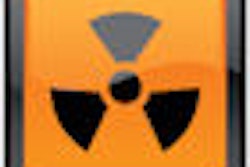Tuesday, December 1 | 11:30 a.m.-11:40 a.m. | SSG03-07 | Room S404CD
Filtered back projection (FBP) algorithms are standard for CT image reconstruction thanks to speedy processing and low computational power requirements. A new algorithm, adaptive statistical iterative reconstruction (ASIR), may allow for reduced-dose acquisition by reducing noise and artifacts with precise modeling of the x-ray beam and electronic noise.However, ASIR processing is time-consuming, according to Sarabjeet Singh from Massachusetts General Hospital in Boston, whose study offers a potential solution. Presently ASIR and FBP blending is available on the scanner console (Discovery CT750 HD, GE Healthcare, Chalfont St. Giles, U.K.) at increments of 10%. The study aimed to find the optimal blend of ASIR and FBP reconstruction for low-dose and rapid chest CT.
Image noise, lesion detection, and diagnostic confidence were assessed in images from 23 patients reconstructed with ASIR and FBP techniques at different tube current-time product levels (150-40 mAs).
The data were used to reconstruct four FBP image series (150mAs-FBP, 100mAs-FBP, 75mAs-FBP, and 40mAs-FBP) in addition to reconstructions with ASIR and three different levels of blending (30%, 50%, and 70%).
"Acceptable image quality can be obtained for chest CT acquired at 40 mAs using ASIR without any substantial artifacts affecting diagnostic confidence," Singh said. Higher blending delivers minor artifacts not affecting interpretation. A level of 70% ASIR-FBP blending permits dose reductions down to 40 mAs.




















